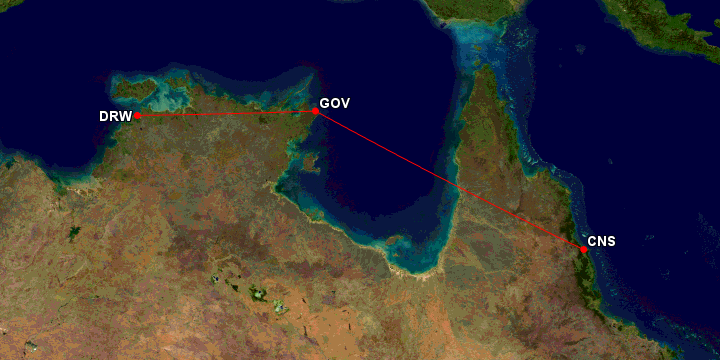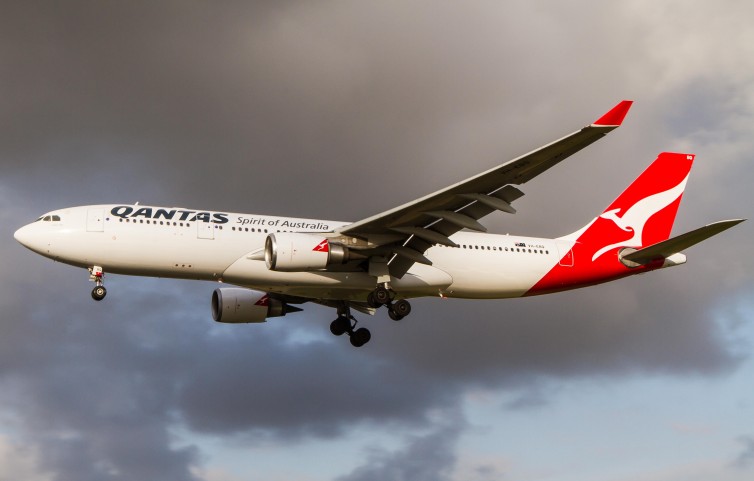
Qantas Airbus A330-200 aircraft now feature the upgraded business class cabin ’“ Photo: Jacob Pfleger | AirlineReporter
Over the last 18 months, Qantas has been progressively upgrading their business class product on their Airbus A330-200 aircraft. The new business suites bring the product in line with the ever-increasing trend of direct aisle access for all business class passengers, as well lie flat beds — a first for Qantas on the domestic market. The upgraded A330-200 cabins are configured with 28 lie-flat seats in a 1-2-1 configuration that can remain in the recline position during takeoff and landing.
It has been quite some time since I last had the opportunity to fly domestically in business class with Qantas, and with my annual trip to Australia, I thought I would burn some Qantas frequent flyer points to check out their new business suites on the popular Sydney-Melbourne route, a very short 95-minute flight.
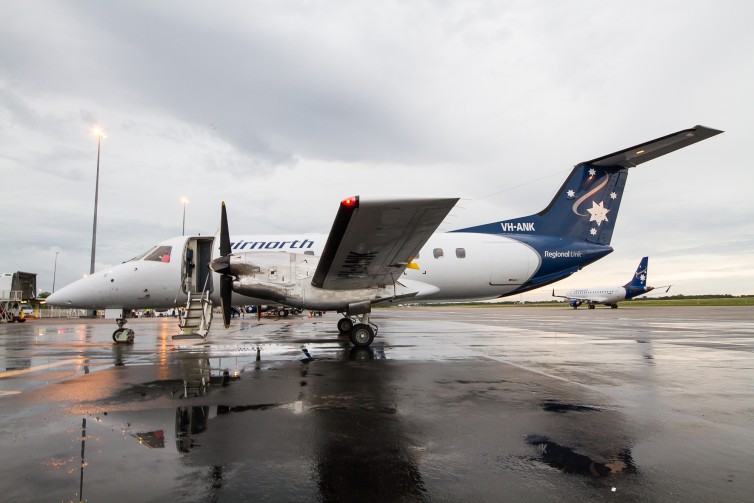
Airnorth operates a fleet of E120 Brasilias on the “centre run” and shorter regional routes – Photo: Jacob Pfleger | AirlineReporter
Following my excellent flight on Airnorth’s jet service from Cairns to Darwin, where I got my first real taste of outback flying in Australia, I was left longing for more outback adventures. When I was planning my trip to Darwin, I came across the “centre-run” operated once again by Airnorth. This was the perfect opportunity for me to not only get my fix of outback flying, but also to experience the Embraer E120 Brasilia for the first time – an increasingly rare aircraft type. At one point in the booking process, I did have to question my sanity. Due to time constraints, I could only do a flight same day return, meaning that I would be flying over 1600 miles in nearly eight hours on a turbo-prop in the Northern Territory’s wet season. Needless to say, my AvGeek mentality took over and I booked the flight without a second guess.
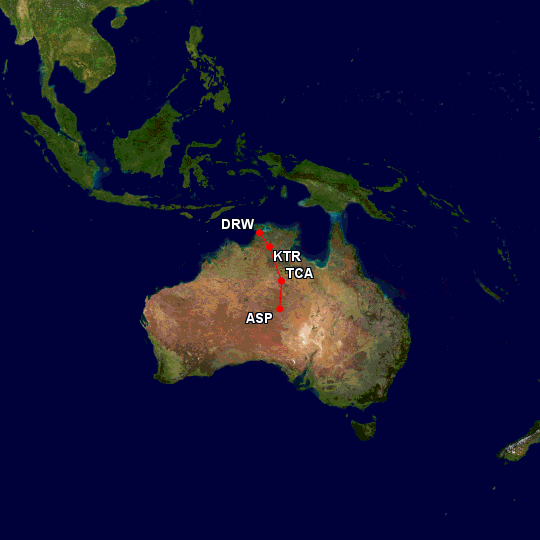
A long way to go in a turbo-prop – Image: Great Circle Mapper
The “centre run” (or “milk run” as referred to by the locals), is a three segment flight from Darwin (DRW) in the top-end to Alice springs (ASP), in Australia’s Red Centre. On the way, the flight stops at Katherine (KTR) and Tennant Creek (TCA); both are key regional communities located on the Stuart Highway which stretches across the continent from Darwin to Adelaide. The route was re-launched in September of 2014 as part of the Northern Territory government’s commitment to developing air services to remote communities. In order to maintain this essential air service, the route is currently subsidized by the government.
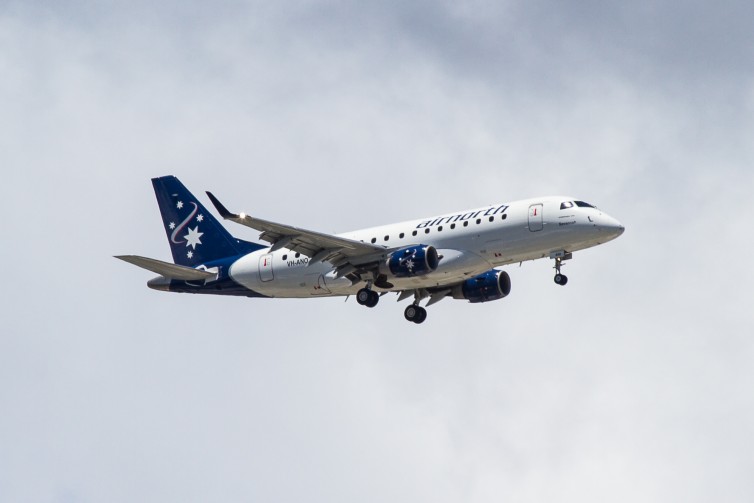
Airnorth operates a fleet of Embraer E-170 jets on the longer regional routes – Photo: Jacob Pfleger | AirlineReporter
In a country as vast as Australia, it is no surprise that the population relies heavily on air transport, particularly in the more remote regions of the country. For the residents in these regions, these air services provide a vital lifeline. In many regions of Australia, these remote air routes are subsidised by the government. While the local residents view these services as an essential link to the outside world, for the AvGeek, it is a unique opportunity to experience some interesting aircraft types, airlines, and routes.
One such flight route that I was fortunate enough to experience recently was from Cairns to Darwin, via Gove. While there are at least three direct flights per day from Cairns to Darwin on the other carriers, I was very interested to try out the service offered by Airnorth.
Airnorth was established in 1978 and has always had a strong focus on providing air services within the remote regions of Australia’s top-end. In recent years, the company has been focusing in particular on the contract charter market, as well as FIFO operations.
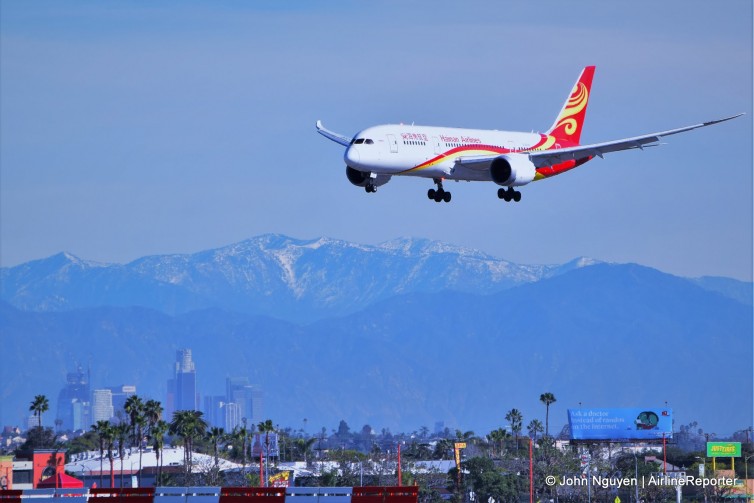
Hainan Airlines’ inaugural flight, operated by a Boeing 787-8 (B-2739), from Changsha to Los Angeles on final approach.
Hainan Airlines, the largest privately operated carrier in China, commenced Los Angeles’s newest non-stop service to the Chinese mainland on January 21. The twice-weekly flights, operated by a Boeing 787-8 Dreamliner, will connect LAX to the capital of Hunan province, Changsha (CSX). AirlineReporter was invited to be on the ramp at LAX for the arrival of the inaugural flight from CSX.
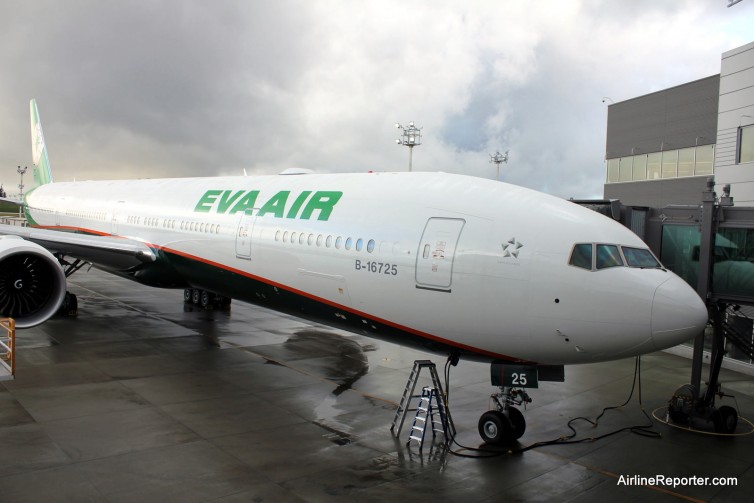
A brand-new EVA Boeing 777-300ER, currently the most popular 777 variant, at Paine Field (with nine-abreast economy)
In October 2015, it appeared that Cathay Pacific was ’˜flirting’ with the idea of changing its long-haul 777 economy class from a 9-abreast to a 10-abreast cabin. This appears to be correct, since Cathay Pacific gauged the responses of some of its most loyal Marco Polo customers in a recent survey to see whether they would accept a 3-4-3 configuration on their long-haul 777 aircraft.
BONUS: Flying a Cathay 777 Across North America in Business Class
’œTo understand the needs of our customers as well as the trend and development of the airline industry, Cathay Pacific periodically conducts research on different aspects of our offerings so as to continuously improve on our passenger services,’ Julie Jarratt, Cathay Pacific Communications Manager explained to AirlineReporter. ’œCathay Pacific, at this stage, has no decision to change the seat width and seat pitch of our 777 fleet.’
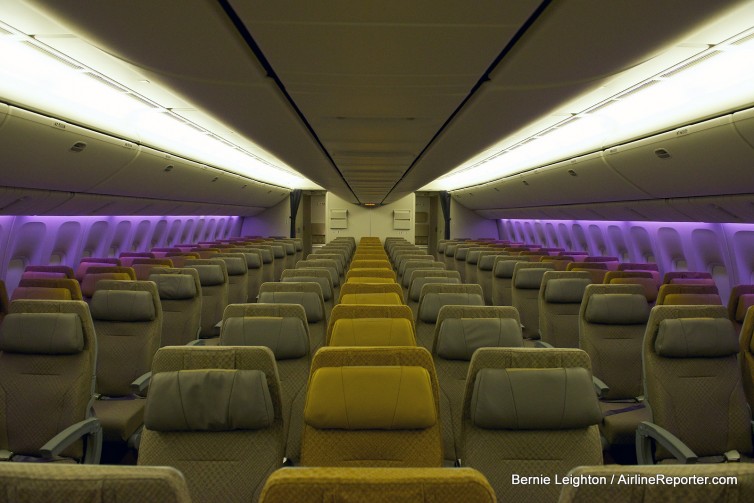
The economy cabin inside a Singapore Airlines 777
From an airline’s perspective, the rationale for a 10-abreast cabin is quite obvious. Not only does it provide a higher profit margin, by lowering its cost per seat mile, but it (theoretically) allows these savings to be put into other benefits for travelers in the form of cheaper airfares or enhanced services. In this sense, a denser cabin allows airlines to move greater numbers of passenger on fewer flights, which leads to fuel efficiency in the form of equated fuel burn reduction savings. I wanted to take a closer look at which airlines are taking delivery of the higher-density 777s, as that configuration is becoming more and more popular.




